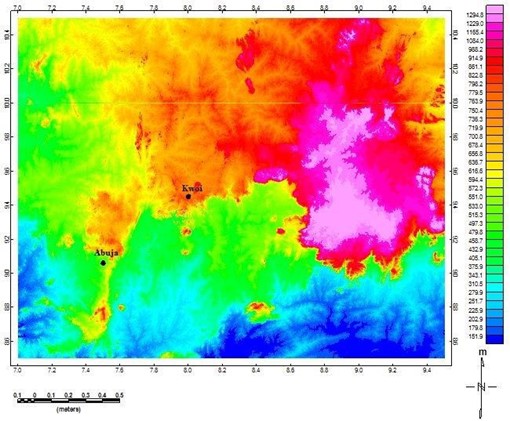Investigation of Earth Tremor Occurrences in Nigeria Using Shuttle Radar Topographic Mission (SRTM) Data and Aeromagnetic Data
Keywords:
Earth tremor, Curie point depth, Seismic hazard, TectonicAbstract
Earth tremors, though often low in magnitude, represent critical indicators of crustal instability and potential seismic hazards. Nigeria, traditionally considered a region of low seismic risk, has recorded recur3rent tremor events across the northcentral and southwestern regions, raising questions about the tectonic and geodynamic processes driving these disturbances. Thisa study integrates Shuttle Radar Topographic Mission (SRTM) data with aeromagnetic datasets to investigate the relationship between surface lineaments, subsurface structures, and tremor occurrences in these regions. SRTM analysis reveals that most tremor epicenters occur near elevated terrains, where topographic loading and structural complexity enhance seismic susceptibility. Aeromagnetic interpretations using tilt derivative techniques delineate major and minor fault systems, showing that tremors in Abuja and Kwoi align with a major NE–SW fault system linked to the offshore Romanche fracture zone, while those in the southwest are associated with intersecting NE- and NW-trending fractures. Curie Point Depth (CPD) estimates further highlight lithospheric thinning in the northcentral region (1.6–13 km), likely influenced by plume dynamics associated with the St. Helena hotspot, in contrast to deeper CPD values (7.2–13 km) in the southwest, reflecting far-field plate stresses. The results demonstrate that Nigeria’s seismicity is driven by a combination of plume-related magmatism, lithospheric weakness, and far-field tectonic forces. These findings provide a preliminary geophysical framework for understanding tremor genesis in intraplate settings and underscore the need for improved seismic monitoring and hazard preparedness in Nigeria.

Published
How to Cite
Issue
Section
Copyright (c) 2025 Journal of Science Research and Reviews

This work is licensed under a Creative Commons Attribution-NonCommercial 4.0 International License.
- Attribution — You must give appropriate credit, provide a link to the license, and indicate if changes were made. You may do so in any reasonable manner, but not in any way that suggests the licensor endorses you or your use.
- NonCommercial — You may not use the material for commercial purposes.
- No additional restrictions — You may not apply legal terms or technological measures that legally restrict others from doing anything the license permits.




